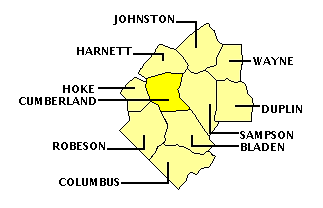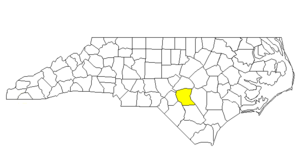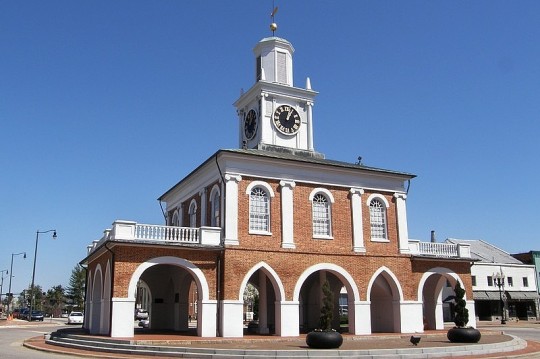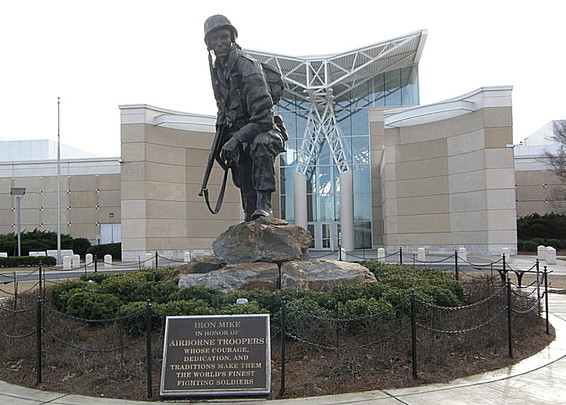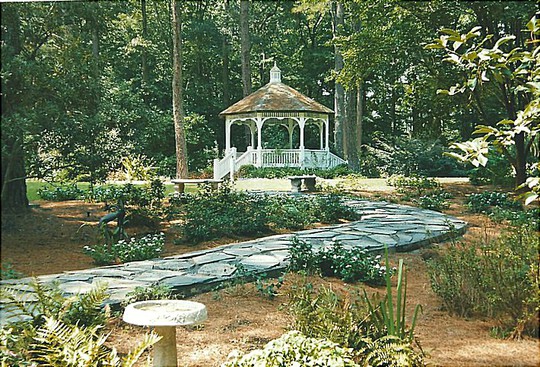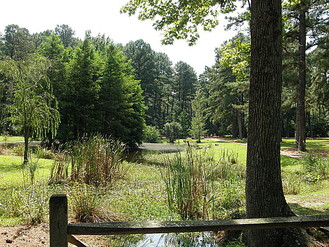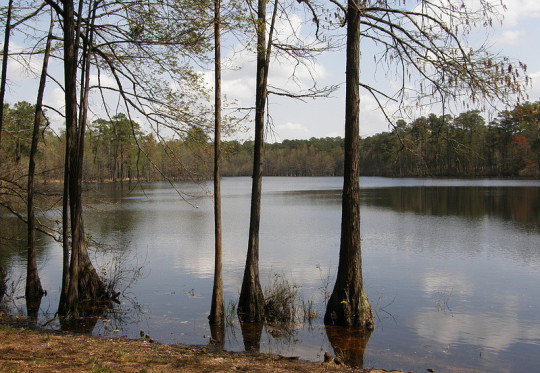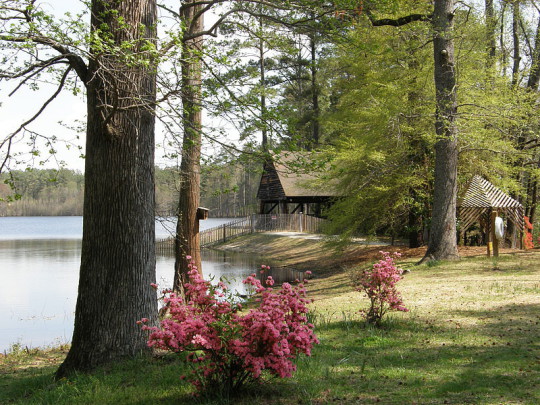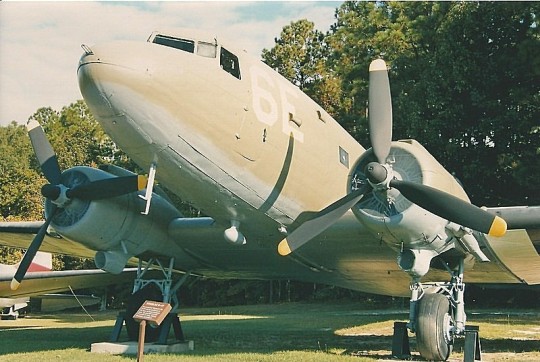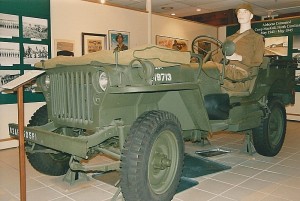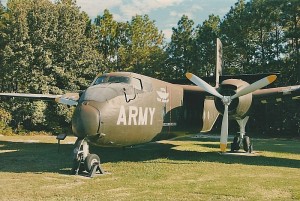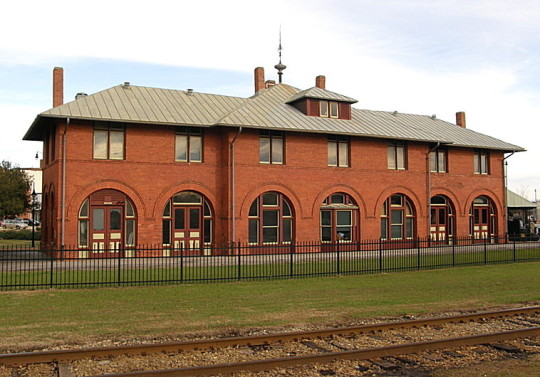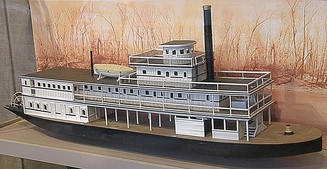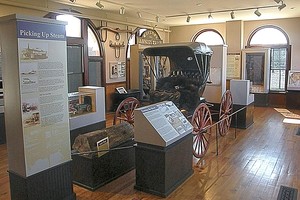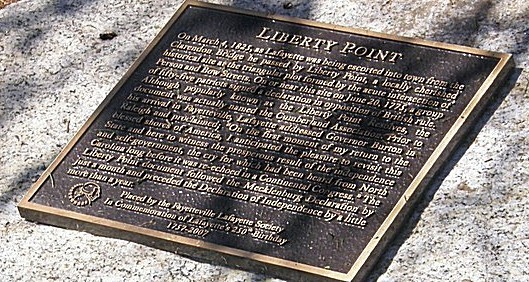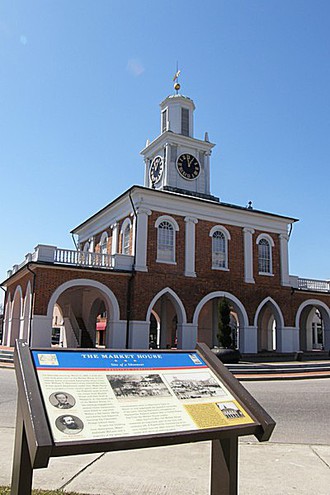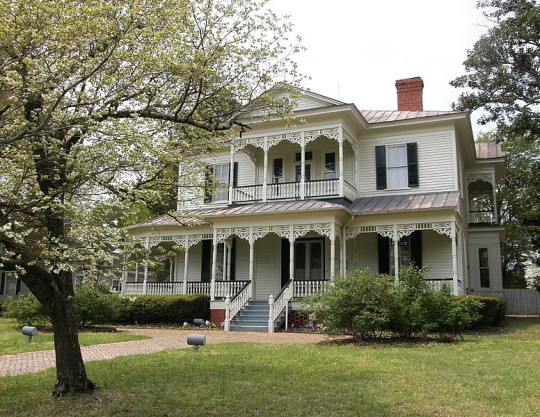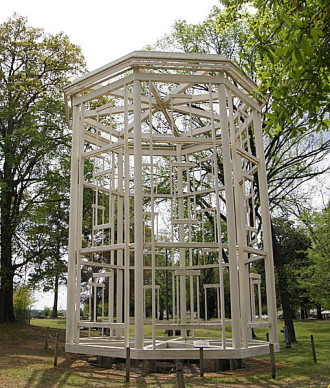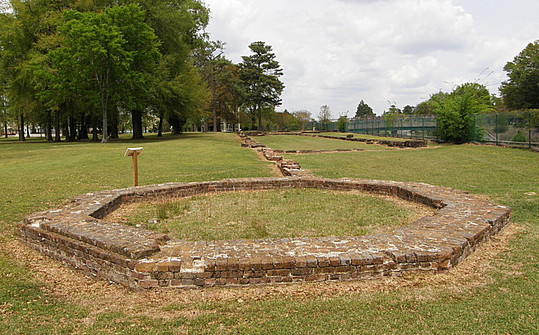CUMBERLAND COUNTY
Scroll down this page or click on specific site name to view features on the following Cumberland County attractions/points of interest:
Airborne & Special Operations Museum, Cape Fear Botanical Garden, Carvers Creek State Park, 82nd Airborne Division War Memorial Museum, Fayetteville Area Transportation Museum, Historic Fayetteville, JFK Special Warfare Museum, Museum of the Cape Fear
Fast facts about Cumberland County:
Created in 1754, the county is named for Prince William, Duke of Cumberland, son of George II.
The county seat is Fayetteville, named in honor of the Marquis de Lafayette. Other communities include Falcon, Godwin, Hope Mills, Linden, Spring Lake, Stedman, and Wade.
Cumberland County’s land area is 652.72 square miles; the population in the 2010 census was 319,431.
It is worth noting that Fort Bragg, named for Confederate general Braxton Bragg, a native of Warren County, NC, is located in Cumberland County.
Below: The iconic Market Square in downtown Fayetteville
Fayetteville
With education as its primary objective, the Airborne & Special Operations Museum highlights the exploits, devotion to duty, and sacrifices of these honored units of the US Army. It is the only museum in the nation to do so. It also serves to underscore the cooperation and harmony existing between Fort Bragg, Fayetteville and Cumberland County, and the state of North Carolina.
Fort Bragg is so integral a part of Fayetteville and North Carolina that it’s hard to imagine it hasn’t always been there. Camp Bragg began as one of many hastily established military training facilities during World War I. It became a permanent base in the 1920s. The 82ndAirborne came decades later, tracing its roots to the Parachute Test Platoon formed by order of Army Chief of Staff George Marshall in June 1940. From more than 200 volunteers, 48 men were chosen for the experimental program. Under the supervision of Lt. Col. William C. Lee, the platoon first trained in New Jersey, where parachute drops built for the 1939 World’s Fair were used in early practice “jumps.” Later the platoon took up training at Fort Benning, Georgia where, on August 16, 1940, only 45 days after the platoon’s formation, the first real jumps were made. William King put his name in the history books by becoming the first enlisted man to parachute. Satisfied with the test program, the U. S. Army formed the Provisional Parachute Group at Fort Benning in 1941. This group was re-designated the Airborne Command in 1942 and moved to Fort Bragg under the command of Lee, whose industry and ingenuity earned him the sobriquet “Father of the Airborne.” The paratroopers’ baptism of fire came during Operation TORCH, the invasion of North Africa begun in November 1942.
Since opening in August 2000, the Airborne & Special Operations Museum has rapidly become one of Fayetteville’s most popular attractions and has contributed greatly to the city’s downtown revitalization efforts. Along with auditoriums, theatres, and smaller galleries, the museum also houses a large, tech-savvy exhibit hall that relates the history and accomplishments of the Army’s airborne and special operations units from the early days of World War II through Operation Desert Storm in a way that is truly unique.
Visitors won’t find the quiet, peaceful atmosphere usually promoted at museums; instead, the main exhibit hall is full of sound and fury. Visitors will walk along the war-ravaged streets of Normandy while the sounds of battle are heard in the distance and paratroopers poise to jump from a C-47 aircraft overhead. Visitors will see a jeep being unloaded from a Waco Glider in Korea, stand in a Vietnam rice field while soldiers deploy from a UH-1 Huey, and trudge alongside a Sheridan tank in the desert sands of Iraq. In addition to these life-size dioramas, the exploits of the airborne and special operations units are detailed in vintage newspapers, maps, photographs, text, and videos. Also showcased are numerous weapons, uniforms, and other artifacts from World War II, Korea, Vietnam, and other conflicts.
The Museum is located at the corner of Hay Street and Bragg Blvd. Hours are 10-5 Tuesday-Saturday and 12-5 Sunday. Admission is free. There is a charge for the Vistascope Theatre and the Pitch, Roll, and Yaw Vista-Dome Motion Simulator, each of which put visitors in the action – they’re certain to match any amusement park ride for thrills. A well-stocked gift shop is also on the premises. 910-483-3003
Fayetteville
The Cape Fear Botanical Garden [CFBG], now in its 24th year, provides guests with 78 acres of beautifully-landscaped gardens, trails, and overlooks. CFBG also includes the 1886 Carter-McCauley-Snider farmhouse, several appropriate dependencies, and the Hazel McCauley Heritage Garden. The latter is a “Water Wise” garden funded by the local utilities commission and intended to educate homeowners on how to create beautiful gardens without using much water. It is in no way being disrepectful to say that the Cape Fear Botanical Garden is for the birds. It’s also for the butterflies and squirrels and just about anybody who enjoys a relaxing sojourn with nature. Regardless of season, CFBG offers a quiet retreat from the daily grind. Bounded on the east by the Cape Fear and on the south by Cross Creek, it’s an appropriate spot to learn a little bit of Fayetteville’s early history. Much of this history is revealed through markers along the Garden’s pleasantly-shaded foot paths.
The Cape Fear is North Carolina’s only navigable river that flows directly into the Atlantic Ocean. What is now Fayetteville had its beginnings in the mid-18th century when two small communities – Cross Creek and Campbelton – formed on the north and south sides of Cross Creek where it joined the Cape Fear. Populated predominantly by Scottish Highlanders, the towns merged in 1778 into “Upper and Lower Campbelton.” In 1793, in honor of popular Revolutionary War hero Marquis de Lafayette, the town took the name Fayetteville. The state’s farthest inland port, Fayetteville was the ideal place for loading and unloading supplies being transported by river. The Prometheus was the first steamboat to make a regular run between Wilmington and Fayetteville, soon followed by the Henrietta. At the peak of the steamboat trade, more than 100 boats regularly traveled the Cape Fear, and goods could be transported from New York to Fayetteville in a scant ten days!
Several overlooks along the River and Oak Trails provide views of the mighty Cape Fear and its meandering, rust-colored tributary. Horticultural highlights include a variety of gardens, including those devoted to daylilies, hostas, and camellias. One of the most photogenic spots is the Great Lawn, punctuated by an impressive white gazebo. This is a popular place for weddings, receptions, and other special events. The Lakeside Garden is another picturesque spot, complete with a traditional wooden bridge arching over a narrow neck of water. A large pavilion located near the entrance to the gardens provides space for small family picnics or larger gatherings. For the kids, there’s the Lilliput Labyrinth, the Friendship Garden, and the Children’s Garden. An interesting curiosity found at CFBG is a sizeable example of petrified wood in the general vicinity of the bog garden. This ancient conifer is a remnant of the Cretaceous period of the Mesozoic era and is roughly 90 million years old! CFBG is open 10-5 Monday through Saturday and 12-5 Sunday. Closed on Sundays from mid-December through February. Admission charged. 910-486-0221
Spring Lake
A recent addition to the growing number of North Carolina State Parks is Carvers Creek, located in Spring Lake. Carvers Creek State Park encompasses more than 4,000 acres in Harnett and Cumberland counties, including some 1,400 acres which had once been a part of the Long Valley Farm, owned and operated by James S. Rockefeller, a grand nephew of industrialist and philanthropist John D. Rockefeller. Currently in an interim phase of development, the park features the half-mile Rockefeller Trail, an easy path that leads from the visitor center to the Rockefeller House, built circa 1938-39. From there, another easy, ¾-mile trail loops around a peninsula that overlooks the millpond; footpaths branching off this trail lead to prime fishing spots. Although the park is ideal for picnicking and nature viewing, the ambience is sometimes disrupted by sounds from a skeet shooting range and from activities at nearby Fort Bragg. The park is open daily year-round except Christmas Day. Hours vary seasonally. Admission is free. 910-436-4681
Fort Bragg
The 82nd Airborne Division War Memorial Museum, located at Fort Bragg, showcases the heroic exploits of the division from 1917 to the present, with exhibits centering on the First and Second World Wars, Vietnam, the Gulf War, and the on-going War on Terrorism, among others. Topics range from combat operations to peacekeeping and humanitarian operations. The 82ndhas the distinction of being the first fully-integrated unit in the US Army. Known as America’s “Guard of Honor,” the 82nd Airborne has see action in Vietnam, Grenada, Panama, the Persian Gulf, Afghanistan, and Iraq, and performed search and rescue in the aftermath of Hurricane Katrina.
The museum packs a lot into a relatively small, one-story building. Exhibits are presented in chronological order, beginning with World War I, when the 82nd Infantry Division was first activated on August 25, 1917. US, British, French, and German uniforms and weapons are displayed, along with items closely associated with the horrors of “trench warfare” – spades and gas masks. Another exhibit includes a copy of the letter awarding the Medal of Honor to Tennessean Alvin York of Company G, 328th Infantry, 82nd Division. It was during the First World War that Sgt. York led seven fellow soldiers in a daring assault against a machine gun nest on October 8, 1918 at Chatel-Chehery, France. The enemy position was taken, 128 men and 4 officers were captured, and York was catapulted to national fame!
The 82nd was reactivated on March 25, 1942, soon after the United States entered World War II. On August 15, 1942, it was reorganized and designated as an airborne division, and exhibits trace the development of the 82nd into an airborne division. One of the larger artifacts is a cut-away of a Waco glider, which could carry 8,000 pounds gross and was used to transport personnel, jeeps, artillery, medical supplies, and rations. K-rations commonly included cigarettes, cereal, wafers, chewing gum, coffee, and small squares of toilet paper. Among the weapons exhibited is the German Nebelwerfer rocket projector, first encountered by American soldiers in North Africa. It is better known as a “Screaming Mimi,” the nickname given it because of the shrill sound the projectile made as it hurtled through the air.
Some of the museum’s most impressive artifacts are those seen outside. One of many airplanes displayed on the grounds is the Douglas C-47 “Skytrain,” the workhorse of the Army Air Corps. This transport was used to carry troops into Sicily, Salerno, Normandy, and Holland. Another is the Fairchild C-119 “Flying Boxcar,” the first aircraft to handle large parachute loads containing ¾-ton trucks and 105-mm howitzers. Two Vietnam-era craft are the C-7 “Caribou,” which provided logistical support, and the UH-1A Iroquois helicopter, most often referred to as the Huey. In addition to a variety of aircraft, field guns, tanks, and other vehicles are displayed. Several memorials to fallen comrades are also found on the grounds. The Museum is located on the Fort Bragg base, and visitors will need to pass through a security checkpoint. Hours are 10-4:30 Tuesday-Saturday, holidays excepted. A 25-minute film is shown at 11, 1, 2, and 3. Admission is free. 919-432-3443
Fayetteville
Appropriately housed in the former Cape Fear and Yadkin Valley Railroad depot, built in 1890, the Fayetteville Area Transportation Museum bulges with exhibits and artifacts spotlighting the progression of regional transportation from Native American footpaths to steamboats, plank roads, and railroads. The Cape Fear is North Carolina’s only navigable river that flows directly into the Atlantic Ocean. In the mid 1700s, two towns – Cross Creek and Campbelton [also spelled Campbellton] – formed on the north and south sides of Cross Creek, where it joined the Cape Fear. This was the farthest navigable point on the river, and these towns established themselves as the primary markets for the N. C. backcountry. The towns merged in 1778 into “Upper and Lower Campbelton,” and in 1793, in honor of Revolutionary War hero Marquis de Lafayette, the town took the name Fayetteville. In so doing, it became the first American city named for the famed Frenchman.
Early transportation naturally centered on the river, and many exhibits deal with the earliest means of conveying goods over water. There are models of a dugout canoe, periauger, pole boat, barrel raft, and flatboat. In 1818, entrepreneur James Seawell began the first regular steamboat operation between Fayetteville and Wilmington. He named his side-wheel paddleboat Henrietta after his daughter, and the N. C. General Assembly granted him exclusive rights to steam navigation between the two towns for seven years. From 1818 to 1940, more than 100 different steamboats plied the waters of the Cape Fear. The last steamboat to operate on the river, Thelma, was moored for the final time in 1939.
During street repairs in the 1980s, workmen uncovered original planks that were part of the Fayetteville & Western Plank Road. Some of these planks are displayed in the museum and call attention to this important improvement in transportation in the N. C. Piedmont. The Fayetteville & Western, originally chartered to be a railroad, couldn’t raise enough money to build one, so it constructed a plank road instead. Built between 1849 and 1854, the wooden road stretched 129 miles from Fayetteville to Salem and is thought to be the longest such road ever laid. It cost $1,750 per mile to build, and toll houses were located every ten to twelve miles. Maintenance proved too costly, however, and the road was abandoned in 1865. Still, the road had accomplished much. Before its completion, a trip from Fayetteville to Salem took three to five days; afterward, travel time was reduced to a scant 18 hours!
It is not known for certain, but the possibility exists that the first railroad in the U. S. was in Fayetteville. In 1822, A. S. Stevens may have built and operated a short incline railway leading from the riverfront up a 50-foot bluff to street level. Railcars attached to ropes and pulleys would have been pulled up the incline by horses. Existence of the railway, however, is not documented except through Steven’s personal deeds and estate papers. The Cape Fear, Yadkin, and Pee Dee Railroad was chartered in the 1830s, but the financial panic of 1837 stymied operations. Western Railroad, chartered in 1852, connected Fayetteville and Sanford, but was an isolated track and failed to connect with any other railroads. The Cape Fear and Yadkin Valley Railway was another short-lived regional operation. It was not until Atlantic Coast Line built the “Fayetteville Cutoff” from Wilson, N. C. to Florence, S. C. that Fayetteville was finally on a main line of a major railroad. Exhibits include a recreated station office and a diorama of Fayetteville circa 1893. The Museum is located at 325 Franklin Street. Hours are 10-4 Tuesday through Saturday. Admission is free. 910-433-1455
Fayetteville
Fayetteville is a North Carolina city that calls itself “historic” and truly is. A full weekend is needed to explore all the historical attractions Fayetteville has to offer. Sites listed individually on this website include the Airborne & Special Operations Museum, the Fayetteville Area Transportation Museum, and the Museum of the Cape Fear Complex. But a pleasant walk around the downtown area leads to smaller, yet no less interesting, places of historic importance. The Visitors Center, located at 245 Person Street, is the best place to get started for such a walk. Here you can get information about and directions to numerous sites. Leave your car at the visitor center and take a short walk west to Liberty Point. Here, on June 20, 1775, more than one year before the National Declaration of Independence was adopted in Philadelphia, patriots endorsed the Cumberland Resolves, pledging their lives and fortunes for the cause of American liberty.
One block further west stands the Market House, built in 1832, modeled after and built upon the site of the first State House, lost in the Great Fire of 1831. Few North Carolina buildings could match the historic importance of the original State House, so called because of the hopeful expectation among Fayetteville citizens when the building was erected that their town might be named the state capital. Though Fayetteville was passed over for that honor, historic meetings nevertheless took place in the second floor assembly room of the State House in the fall of 1789. Here the NC General Assembly ratified the US Constitution on November 21, 1789, making North Carolina the 12th state to join the nation. This same legislative body established the University of North Carolina, the first public university in the country. William R. Davie, a strong proponent of the school and actively involved with its early development, is often cited as "The Father of the University."
Walk one block north to Cross Creek/Linear Park and you’ll see the statue of the Marquis de Lafayette. Fayetteville has the distinction of being the first city in America to be named after the famous Frenchman, and it is the only city named in his honor that Lafayette actually visited in his 1825 tour of the states. After completing your walking tour of downtown, make the short drive over to Cross Creek Cemetery, where you’ll find a white obelisk honoring fallen Confederates; erected in 1868, it is the oldest Confederate memorial in the state. Money for the monument was raised by area women.
Fort Bragg
Exhibits at the John F. Kennedy Special Warfare Museum begin with World War I, continue through World War II and the Korean Conflict, and include recent actions in Iraq. Museum hours are 11-4 Tuesday through Sunday. Admission is free. 910-432-1533
Fayetteville
The Museum of the Cape Fear Historical Complex in Fayetteville includes a regional history museum, the 1897 Poe House, and the site of the 1838-1865 Arsenal. Though relatively small, the museum showcases a variety of interesting exhibits pertaining to Fayetteville and its environs from the 1700s through the 1900s. Visitors will learn, for example, how Scottish Highlanders settled the upper Cape Fear region in the mid-1700s, and how the neighboring communities of Campbelton and Cross Creek joined in 1783 to form Fayetteville, named in honor of the Marquis de Lafayette. Other exhibits detail Fayetteville’s importance as an inland river port and terminus for the Fayetteville & Western plank road. Private companies built the latter, which ran 129 miles west to Salem. At the time of its completion, it was one of the longest plank roads in the world, with tollhouses spaced every eleven miles. Products from such towns as Hillsborough, Salisbury, and Salem were transported overland to Fayetteville, and then shipped downriver to Wilmington via one of the many riverboats that plied the Cape Fear. From 1818 until 1923, steamboats made Fayetteville a hub of inland commerce and trade.
Adjacent to the museum building is the elegant home of Fayetteville businessman E. A. Poe. Built in 1897, the two-story frame house features a wrap-around porch and displays considerable Eastlake detailing in the spindles and scrollwork. The spacious interior looks much as it did more than a 100 years ago, giving visitors the sense that the owners have stepped out only momentarily. This illusion is enhanced by the quantity of original family furnishings on display, generously donated by Poe descendants. The house museum is a well-preserved reflection of the late Victorian and early Edwardian period in upper middle class America.
The site of the famed Fayetteville Arsenal is behind the museum, on the other side of busy Martin Luther King Blvd. The highway actually runs through the center of the arsenal site, but compromises at the time of its construction – a narrower roadway cut, a shift to the east, and a retaining wall – allowed a portion of the grounds to be preserved. Fayetteville was chosen as the location for a U. S. arsenal in 1836 because of its location between Washington, D. C. and Augusta, GA, its proximity to navigable waters and a major north-south highway, and its accessibility to both mountains and coast. Plans were scaled back in 1845, however, so that Fayetteville served as a depository only. This changed in 1861, when Confederate forces captured the facility. Equipment and personnel from the federal arsenal captured at Harpers Ferry were moved to Fayetteville, and production of arms and ammunition began. Although the facility did manufacture the famous Fayetteville Rifles, its real importance to the Confederacy was in the production of ammunition. When Union forces occupied Fayetteville in March 1865, General Sherman ordered that the arsenal be blasted, burned, and battered to the ground. Today only a few foundations remain, and a “ghost tower” of white girders marks the location of the arsenal’s northwest corner. Museum hours are 10-5 Tuesday-Saturday, 1-5 Sunday. Admission is free; donations are accepted. The museum includes a small gift shop. Tours of the museum building and arsenal site are self-guided. Tours of the Poe House are given on the hour and last about 45 minutes. 910-486-1330
Cumberland County is bordered by BLADEN, HARNETT, HOKE, MOORE (Region Seven), ROBESON, and SAMPSON counties.
Return to REGION FIVE HOME PAGE.
Return to GEOGRAPHIC REGIONS HOME PAGE.

